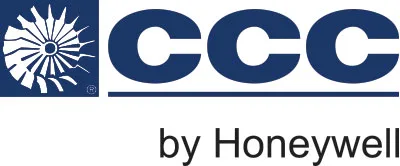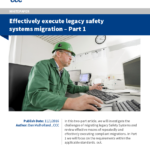

- Industries
- Solutions
- Services
- About CCC
- Media Center
- Contact
Discover the benefits of bringing CCC’s best-in-class turbomachinery controls inside your Honeywell Experion PKS.
WATCH NOWEffectively execute legacy safety systems migration – Part 1
In this two-part article, we will investigate the challenges of migrating legacy Safety Systems and review effective means of repeatedly and effectively executing compliant migrations.
In Part 1 we will focus on the requirements within the applicable standards.
In Part 2 we will detail the means by which effective and compliant migrations can be carried out.

Fill out the form to download the FREE white paper “Effectively execute legacy safety systems migration – Part 1”.
Download your FREE copy today!
Contents Preview
Introduction
In this two-part article, we will investigate the challenges of migrating legacy Safety Systems and review effective means of repeatedly and effectively executing compliant migrations.
In Part 1 we will focus on the requirements within the applicable standards.
In Part 2 we will detail the means by which effective and compliant migrations can be carried out.
Historical Perspective
In recent years the requirements for compliance with Functional Safety best practices has become a key pre-requisite for the realisation of safety solutions. This arises from the predominant causes of incidents being systematic errors which cannot be corrected without modification of the system i.e., repair or replacement of hardware does not resolve the underlying problem. A study performed by the UK Health & Safety Executive in 2004 showed that the majority (44%) of systematic errors were latent from the original requirements definition with a further 15% introduced during the engineering phase. Others will have been introduced during maintenance and modification activities throughout the lifecycle. It must therefore be accepted that there is a high risk of latent systematic errors in legacy SIS application programmes.
In some cases, programmable control and safety systems may have been operating for many years and the owner/operator would like to take some “Proven in Use” credit for the application, however hardware obsolescence demands a transfer of the application software to a new platform. Control system migrations have been performed many times and it is a general misconception that safety systems can be migrated, translated, transferred or upgraded with the same lower degree of rigour.